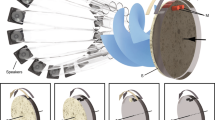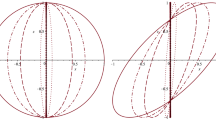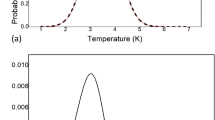Abstract
IF an observer is situated in a radiation field and observes that the radiation is black-body radiation of temperature T, then a second observer moving with a velocity v relative to the first will observe a different spectrum, and the spectrum will depend on the direction in which he looks. It is generally assumed1 that the second observer, using the same radiometer as the first, would receive more power from the direction in which he is moving, but, according to a defective derivation by Condon and Harwit2 based on photon counts, a detector receives less power from an approaching source than from a receding one, if hv/kT < 1.60. This also implies that the spectrum no longer appears as a black-body spectrum.
This is a preview of subscription content, access via your institution
Access options
Subscribe to this journal
Receive 51 print issues and online access
$199.00 per year
only $3.90 per issue
Buy this article
- Purchase on Springer Link
- Instant access to full article PDF
Prices may be subject to local taxes which are calculated during checkout
Similar content being viewed by others
References
Partridge, R. B., and Wilkinson, D. T., Phys. Rev. Lett., 18, 557 (1967).
Condon, J. J., and Harwit, M., Phys. Rev. Lett., 20, 1309 (1968); 21, 58 (1968) (erratum).
Conklin, E. K., and Bracewell, R. N., Nature, 216, 777 (1967).
Author information
Authors and Affiliations
Rights and permissions
About this article
Cite this article
BRACEWELL, R., CONKLIN, E. An Observer moving in the 3° K Radiation Field. Nature 219, 1343–1344 (1968). https://doi.org/10.1038/2191343a0
Received:
Issue Date:
DOI: https://doi.org/10.1038/2191343a0
This article is cited by
-
Conservation of the Energy-Momentum
International Journal of Theoretical Physics (2017)
-
Boosted Statistical Mechanics
International Journal of Theoretical Physics (2015)
-
Measurement of cosmic background energy by a moving detector in a Riemannian space-time
International Journal of Theoretical Physics (1997)
-
Velocity of the Earth with Respect to the Cosmic Background Radiation
Nature (1969)
-
Energy Flux from the 3° K Radiation
Nature (1968)
Comments
By submitting a comment you agree to abide by our Terms and Community Guidelines. If you find something abusive or that does not comply with our terms or guidelines please flag it as inappropriate.



